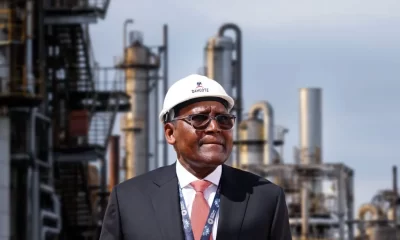Column
Rewarding Positive Values
Psychologists speak of positive reinforcement. It refers to the introduction of a desirable or pleasant stimulus after a behaviour.
“The desirable stimulus reinforces the behaviour”, making it more likely that the behaviour will reoccur.
This concept is recommended by psychologists to reward and encourage good behaviour, especially in young people.
Anything done to reward positive values in society is for the common good of humanity. Government must have a deliberate policy of rewarding good conduct as a national policy.
This will not only encourage patriotism but will motivate a national culture of honesty, transparency, empathy, excellence and good citizenship.
The recent recognition and honour given to a police officer who exercised the good virtue of patience and calm spirit in the midst of assault and harassment is commendable.
A police officer ASP Erhabor was held on his throat buy a bus driver in course of a minor argument in Lagos according to news reports.
The police officer an Assistant Superintendent of Police was commended by Governor Sanwo-Olu for his exceptional gallantry by exercising calmness and patience in the face of extreme provocation.
The police officer who was fully armed exercised extreme restraint and refused to take advantage of his superior disposition.
Many Nigerian police officers would have shot the bloody civilian for his effrontery.
Interestingly, he exercised the power of patience.
The act of positive reinforcement by the society is the talking point in today’s catalogue on national events.
Governor Babajide Sanwo-Olu wrote in his twitter account, “I want to commend ASP Erhabor for his patience, decorum and good example of a police officer”.
The import of this commendation is that the Nigerian Police officers are known for their impatience in dealing with the people they are paid to protect.
Their impatience has often led to accidental discharge and outright murder cases. It is therefore important to stress that the governor’s gesture and the rewards that followed this behaviour should be sustained to encourage a positive culture of good conduct in our clime.
ASP Sunday Erhabor was also gifted with one million naira. Some Nigerians who were impressed by his uncommon display of professionalism and restraint in the face of provocation by a bus driver gathered the sum of one million naira for him.
The society appreciates good conducts. This will serve as a stimulus for serving officers in the Nigeria Security Services to begin to conduct themselves well while on duty and begin to relate well with the people they are paid to protect.
There is an inherent potential in Nigerians that encourages good conduct, but a wave of wrong values have blown across the populace promoting wrong ethics and culture.
The Nigerian Society therefore can be reoriented through rewards for good conduct.
Recently, in a wedding reception in Port Harcourt a Senior Secondary School pupil of Federal Government College Port Harcourt returned an android phone he found in a rest room which was forgotten by a wedding guest.
The Federal Government College Pupil, Philemon Igbokwe who followed his mother to the wedding reception of a relative gave the phone to the master of ceremony who announced the good deed.
In a quick response, the former commissioner of Information and Communication in the State, Chief Emma Okah announced a cash rewards to the lad.
Other guests who followed the gesture of Emma Okah, who was the chairman of the occasion, also made donations in naira and dollar.
At the end of the day Philemon was gifted N340,000 naira for a good conduct.
Subsequent reports indicate that Chief Emma Okah has awarded a two year university scholarship to Philemon Igbokwe for showing a good example in a society, where many young people have lost their soul to the devil. Honesty they say is the best policy. This act of positive reinforcement by Emma Okah is what is needed from leaders of our society.
We need leaders who recognize and reward good conducts and not leaders who turn our younger population into thugs, cultists and murderers.
Nigeria needs leaders who will mentor the younger generation into being good citizens and productive members of society.
Rewarding good conduct and excellence is the way to go.
Poverty and the poor state of the economy should not push our population into cultivating and exhibiting wrong values.
By: Bon Woke
Column
Are the Bears Wrong About the Looming Glut in Oil?

Column
Renewable Energy Faces Looming Workforce Crisis

Column
Is It End For Lithium’s Reign As Battery King?

-

 Politics3 days ago
Politics3 days agoSenate Receives Tinubu’s 2026-2028 MTEF/FSP For Approval
-

 Sports3 days ago
Sports3 days agoNew W.White Cup: GSS Elekahia Emerged Champions
-
Sports3 days ago
Players Battle For Honours At PH International Polo Tourney
-

 News3 days ago
News3 days agoRSG Lists Key Areas of 2026 Budget
-

 Sports3 days ago
Sports3 days agoAllStars Club Renovates Tennis Court… Appeal to Stop Misuse
-

 News3 days ago
News3 days agoDangote Unveils N100bn Education Fund For Nigerian Students
-
Sports3 days ago
NFF To Discuss Unpaid Salaries Surrounding S’Eagles Coach
-

 News3 days ago
News3 days agoTinubu Opens Bodo-Bonny Road …Fubara Expresses Gratitude

